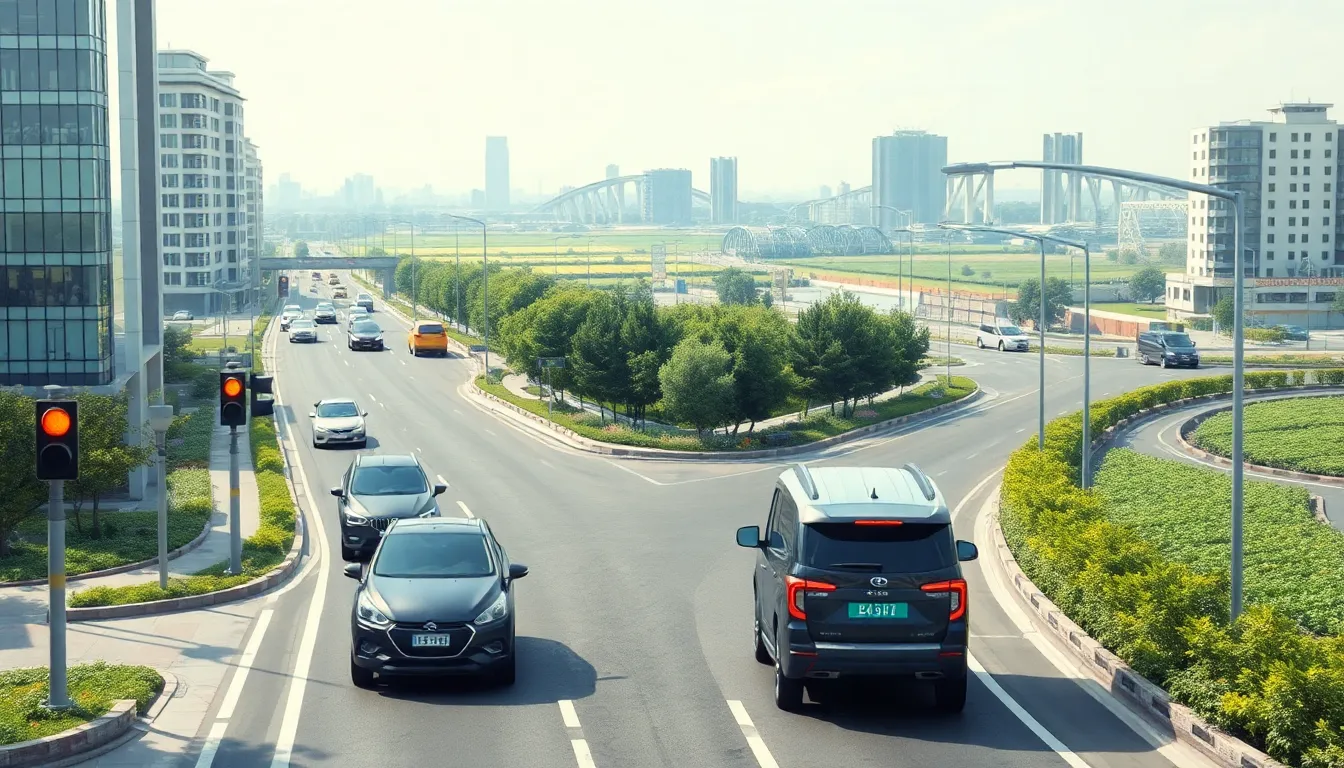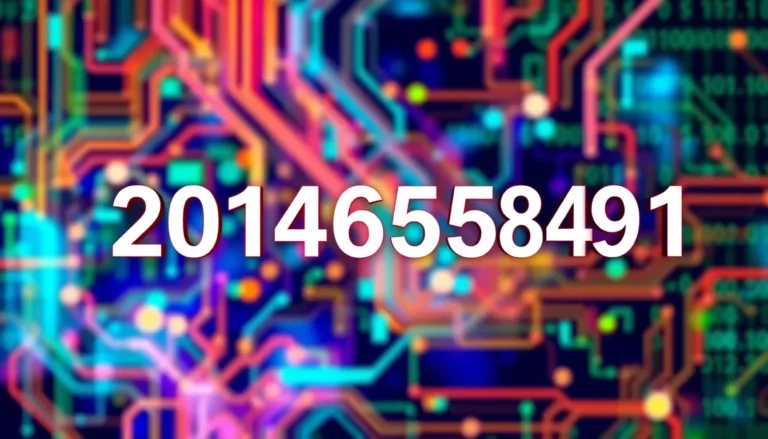Imagine a world where your fridge can remind you to buy milk while your car finds the fastest route to the grocery store—all without you lifting a finger. Welcome to the era of 5G Internet of Things (IoT), where everything from your toaster to your thermostat is getting smarter and more connected. It’s like living in a sci-fi movie, but without the flying cars (yet).
Table of Contents
ToggleOverview of 5G Internet of Things
5G technology significantly boosts the Internet of Things (IoT) by providing faster speeds and lower latency. This improvement enhances communication between devices, allowing them to process data almost instantly. Smart appliances, such as refrigerators and thermostats, connect to the internet more effectively, leading to optimized energy consumption.
Low-power wide-area networks (LPWAN) play a critical role in 5G IoT, enabling battery-operated devices to communicate for years without replacements. Industries, such as agriculture, benefit from sensors that monitor soil moisture and crop health, promoting sustainable farming practices.
Enhanced mobile broadband (eMBB) serves as another facet of 5G, facilitating high-definition video streaming and real-time data sharing in smart cities and medical devices. Connected vehicles become safer with 5G, allowing them to communicate on the road, improving traffic management and reducing accidents.
Massive machine-type communications (mMTC) represent the ability to connect millions of devices simultaneously. This capacity drives innovations like smart grids, where real-time energy data sharing helps balance supply and demand efficiently.
Adaptive security measures protect connected devices as cyber threats grow. Enhanced encryption methods secure sensitive information transmitted over 5G networks, ensuring user privacy.
The future of the 5G Internet of Things opens possibilities beyond current imagination. Smart homes become increasingly efficient, while industries leverage automation and data analytics to optimize operations. The integration of 5G technology into everyday life reshapes how individuals interact with their environments, leading to greater convenience and improved quality of life.
Key Features of 5G Internet of Things

5G Internet of Things (IoT) boasts many features that enhance device interoperability and functionality. Connectivity significantly improves as devices communicate effortlessly across networks.
Enhanced Connectivity
While traditional networks struggle with congestion, 5G offers robust connectivity, allowing countless devices to connect simultaneously. Smart cities thrive with interconnected systems, improving urban management and citizen engagement. For example, sensors in traffic lights and public transport track real-time data, facilitating efficient routing and reduced wait times. Enhanced connectivity drives innovation in agriculture, where IoT devices monitor crop health and soil conditions continuously.
Improved Speed and Latency
Data transmission speeds soar to incredible levels with 5G technology. Users experience near-instant response times due to dramatically reduced latency. Connected vehicles benefit by sharing real-time information, heightening road safety. Smart appliances relay data without delays, allowing for immediate adjustments in energy consumption. This speed enhances applications like telemedicine, where doctors can monitor patients through live video feeds. Overall, the combination of higher speeds and lower latency transforms how devices interact and respond in daily life.
Applications of 5G Internet of Things
5G Internet of Things (IoT) enables a wide range of applications that improve everyday life and industry operations. Enhanced connectivity and speed drive innovations across various sectors.
Smart Cities
Smart cities rely on 5G IoT to enhance public services and citizen experiences. Traffic management systems utilize real-time data to optimize signal timings, reducing congestion. Streetlights equipped with sensors adjust brightness based on pedestrian activity, conserving energy. Waste management improves through smart bins that notify collection services when full, minimizing operational inefficiencies. Public safety benefits from connected surveillance cameras that provide instant alerts on suspicious activities. Overall, these technologies create efficient urban environments that enhance quality of life for residents.
Industrial Automation
Industrial automation transforms with 5G IoT, increasing efficiency and productivity across manufacturing processes. Connected machinery adjusts performance in real-time based on data analysis, leading to reduced downtime. Asset tracking becomes seamless as sensors monitor equipment locations and statuses continuously. Predictive maintenance identifies potential failures before they occur, saving costs and minimizing disruptions. Supply chain management improves through enhanced communication between devices, allowing for better inventory control and logistics. These advancements shape a highly responsive and resilient industrial landscape, benefiting companies and consumers alike.
Benefits of 5G Internet of Things
5G Internet of Things (IoT) offers various advantages that enhance the connectivity and performance of smart devices, transforming individual experiences and industry operations.
Increased Efficiency
Enhanced operational efficiency characterizes the impact of 5G IoT. Businesses leverage low-power wide-area networks to enable devices, such as sensors, to communicate for extended periods without battery replacement. Smart appliances optimize energy consumption, lowering utility costs while preserving resources. Furthermore, connected vehicles streamline traffic flow, reducing congestion and travel times. Significant improvements emerge in agricultural practices, where sensors monitor soil conditions, leading to better crop yields. Industries achieve greater productivity through real-time monitoring of machinery, ensuring minimal downtime.
Real-Time Data Processing
Real-time data processing emerges as a cornerstone of 5G IoT benefits. With faster data transmission, devices relay information instantaneously, enabling immediate responses to changing conditions. Smart cities utilize this capability for improved traffic management, adapting signals based on current traffic flow. Telemedicine applications thrive on near-instantaneous data sharing, allowing healthcare professionals to monitor patients remotely. Commercial operations become more agile with real-time insights into inventory levels and supply chain dynamics, facilitating informed decision-making. Enhanced communication fosters innovation across various sectors, creating a connected ecosystem that reacts promptly to user needs.
Challenges and Considerations
5G Internet of Things (IoT) presents several challenges that require careful consideration. Security and infrastructure play pivotal roles in determining its effectiveness and adoption.
Security Concerns
Cybersecurity remains a pressing issue with 5G IoT. Enhanced connectivity increases the number of potential entry points for cyberattacks. Data encryption and privacy protection are essential for safeguarding sensitive information. Moreover, the implementation of adaptive security measures helps mitigate risks associated with increased device interconnectivity. Organizations must remain vigilant against evolving threats to ensure a secure environment for users.
Infrastructure Limitations
Existing infrastructure may pose limitations to the widespread implementation of 5G IoT. In many areas, the necessary upgrades to support high-speed connectivity are inadequate. Development of additional cell towers and enhancements in network reliability is crucial for maximizing 5G potential. Remote and rural regions often face more significant challenges due to limited access to advanced technology. Investments in infrastructure are essential to bridge connectivity gaps and accommodate the increasing number of devices.
The advent of 5G IoT is transforming how individuals and industries interact with technology. With its ability to connect millions of devices seamlessly the potential for innovation is limitless. From smart homes to efficient agricultural practices the benefits are clear.
However the journey isn’t without challenges. Security concerns and infrastructure limitations require careful consideration and investment. As these hurdles are addressed the future of 5G IoT promises to enhance daily life and reshape entire sectors. Embracing this technology will pave the way for smarter cities and more efficient industries ultimately leading to a more connected and responsive world.



